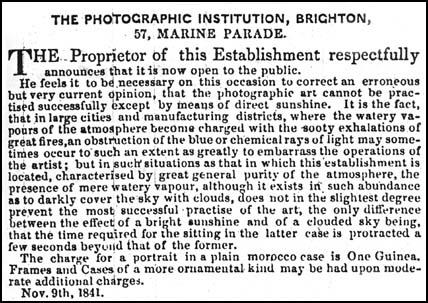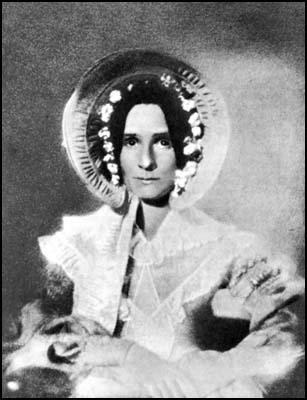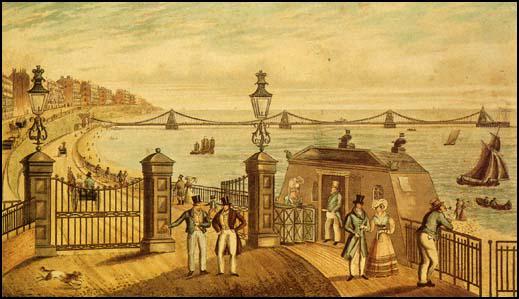Brighton's
First Photographic Studio
Brighton’s first photographic studio opened on Monday 8th November
1841 at 57 Marine Parade, a large house situated on Brighton’s
eastern seafront. Two days later, the ‘Brighton Guardian’
carried a notice dated 9 November 1841, in which “The Proprietor
of The Photographic Institution” at 57 Marine Parade announced
that his Establishment was now open to the public. [SOURCE
1] On the same page of the ‘Brighton Guardian’,
a correspondent of the newspaper welcomed the opening of the Photographic
Institution, which he believed would supply “what has been
long felt to be a great desideratum*
in society, - the means of securing a correct likeness without the
tedium of sitting for hours to an artist”
*desideratum = “a thing wanted
or desired"
William
Constable
Neither the article or the advertisement in the Brighton Guardian
of 10 November 1841 mentions the name of “The Proprietor”
of the Photographic Institution. The anonymous proprietor
was William Constable, a multi-talented
man, who at the age of 58 was entering a new field of enterprise,
which would draw upon those inventive skills which he had previously
demonstrated in the world of science, art and business.

Advertisement
for William Constable's Photographic Institution ( Brighton Guardian
10 November 1841)
In the 1851 Census, William Constable gave his occupation as ‘Flour
Manufacturer and Heliographic Artist’, but this description
fails to reflect what had up to then been an extraordinary and colourful
career. A man without the benefit of an extended formal education,
William Constable had worked at various times as a successful high
street draper, an inventor of scientific devices, a watercolour
artist, cartographer, land surveyor, architect , bridge builder,
engineer, and the surveyor of a thirty mile stretch of the London
to Brighton Turnpike Road. [SOURCE
2] At an age when most men would be entering the last stage
of their working life, William Constable decided to embrace a new
technology and embark on a new career as a Photographic Artist.
Constable
in America
During
his lifetime, William Constable made a total of three visits to
America and it is possible that on his last trip to the States
in 1840, he had the opportunity to study the commercial possibilities
of the recently invented art of photography. Louis Jacques
Mande Daguerre, a French theatrical designer and showman had
perfected the technique of fixing an image on a silver-coated
copper plate in the late 1830s and the process had been announced
to the world in Paris in August 1839. This early form of photograph
was given the name daguerreotype by its inventor. The first
successful American daguerreotype was made in New York in September
1839 . Alexander Wolcott and his business partner John Johnson
opened the world’s first daguerrian portrait studio in New
York at the beginning of March 1840. Given Constable’s intellectual
curiosity and his fascination with scientific processes, it is
likely that he took an early interest in the new art of photography
and while in America he had the opportunity to observe the work
of early American daguerreotypists and see the commercial potential
of producing and selling photographic portraits.

Miss Dorothy Draper,an American daguerreotype
portrait taken by John W Draper in June 1840
It
is therefore possible that when William Constable returned to
Brighton from America in 1841, he already had some knowledge of
the daguerreotype process. However, in the England of 1841 he
was not free to open his own independent photographic portrait
studio. In England, unlike other parts of the world, any person
who wished to establish a daguerreotype portrait studio first
had to acquire patent rights or purchase a licence from Richard
Beard, a prosperous businessman who since 1840 had taken steps
to take control of this new commercial enterprise.
CLICK HERE TO CONTINUE
Richard
Beard and the Daguerreotype Patent in England


